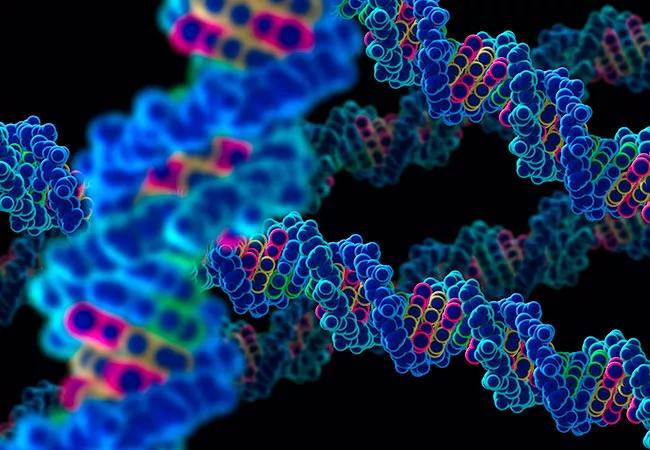Advertisement
What it means for screening, treatment and genetic testing

BRCA2 mutations linked with increased risk of breast, ovarian, prostate and other cancers also may play a role in pediatric lymphoma.
Advertisement
Cleveland Clinic is a non-profit academic medical center. Advertising on our site helps support our mission. We do not endorse non-Cleveland Clinic products or services. Policy
A retrospective study recently published in JAMA Oncology has reported a statistically significant prevalence of BRCA2 mutation in survivors of pediatric non-Hodgkin lymphoma. The prevalence was not statistically significant in Hodgkin lymphoma.
“This insight on the biology of pediatric lymphoma is really big news,” says Ilia Buhtoiarov, MD, a pediatric hematologist/oncologist with Cleveland Clinic Children’s. Dr. Buhtoiarov was not involved in the study, which was published by researchers at St. Jude Children’s Research Hospital. “Finally, we receive evidence that something happens at a deep genetic level that predisposes some patients to the disease.”
Pediatric lymphoma was not included in the researchers’ earlier studies of pediatric cancer predisposition, he notes. Their new study fills in some missing blanks.
However, while exciting scientifically, the findings probably will not change anything clinically. At least not yet.
“It’s a noteworthy step,” says Dr. Buhtoiarov. “But it leaves us with more questions.”
Despite the study’s magnitude, Dr. Buhtoiarov points out two limitations. First, BRCA2 is only the third most common germline mutation in pediatric cancer, according to the researchers’ landmark 2015 study. TP53 and APC mutations are more common in patients with leukemias, brain tumors and other pediatric cancers. “Focusing only on BRCA2 may introduce bias,” says Dr. Buhtoiarov. “It would be interesting to evaluate those more common gene mutations as well. Are they present in pediatric lymphoma patients too? If they are, then how frequently compared to BRCA2 mutation?”
Advertisement
Second, the term “non-Hodgkin lymphoma” comprises at least three major types (namely lymphoblastic lymphomas, mature B cell lymphoma, and anaplastic large cell lymphoma) and several minor ones, all with unique biology. “The pathology and treatments are different,” explains Dr. Buhtoiarov. “You cannot say that a single gene mutation would be associated with three biologically distinct types of non-Hodgkin lymphoma. It’s important to reveal which types of non-Hodgkin lymphoma are most commonly affected by the mutation.” Classical Hodgkin lymphoma, on the other hand, is biologically more uniform, and the study indicated that it was not significantly linked to a BRCA2 mutation. Dr. Buhtoiarov questions whether the mutation would have as powerful a link to non-Hodgkin lymphoma if evaluated by subtype.
“Before changing screening or treatment protocols for pediatric patients, more questions need to be answered,” says Dr. Buhtoiarov.
Advertisement
“There are so many unknowns still out there,” says Dr. Buhtoiarov.
Even for children with a suspected BRCA2 mutation (who are part of families already in genetic counseling due to prevalence of BRCA-associated cancers), the care path is murky.
“Only 1.4% of non-Hodgkin lymphoma patients in the study had a BRCA mutation,” notes Ryan Noss, MS, LCC, a genetic counselor with Cleveland Clinic’s Center for Personalized Genetic Healthcare. While slightly higher than the general population, the prevalence of BRCA mutation in children with lymphoma may still not be high enough to warrant genetic testing.
“The ethical implications of testing a healthy minor for a gene traditionally associated with adult-onset cancer risks are unclear,” says Noss.
“Only years of forward-looking observation will help answer the questions raised by this retrospective study,” says Dr. Buhtoiarov.
“Cleveland Clinic Children’s is already positioned to contribute,” he says. All pediatric patients with leukemia and lymphoma at Cleveland Clinic Children’s are screened for changes in various cancer predisposition genes, including BRCA2, as well as TP53 and APC genes.
“This new study reinforces that there are multiple factors involved in most pediatric cancers, including lymphoma,” says Dr. Buhtoiarov. “There is growing evidence that a genetic predisposition may exist — but not in most patients. Those who have one tend to be in families with known mutations due to a significant familial cancer history.”
Advertisement
Advertisement

Collaborative research effort underscores the urgent need for effective second-line therapies in this rare, aggressive cancer

Largest study to date comparing direct-acting oral anticoagulants to low-molecular-weight heparin

Treatment assigned FDA review date in June 2025

Pembrolizumab does not improve outcomes, but immunotherapy may still offer benefit

Cleveland Clinic, the University of Minnesota and University of Cambridge receive $1M grant to develop point-of-care biosensor for early detection and treatment personalization

Long-acting antiemetics and high-dose steroids key to minimizing acute nausea

Neoadjuvant immunotherapy improves outcomes

Use of GLP-1s and improving cardiovascular health lowers risk of hematologic malignancies